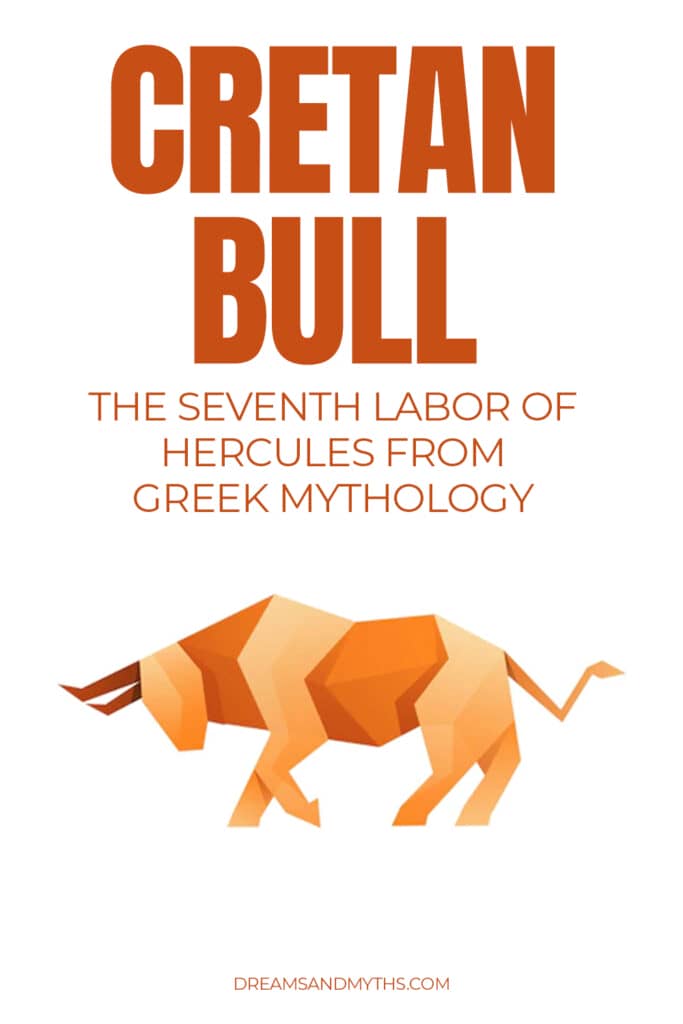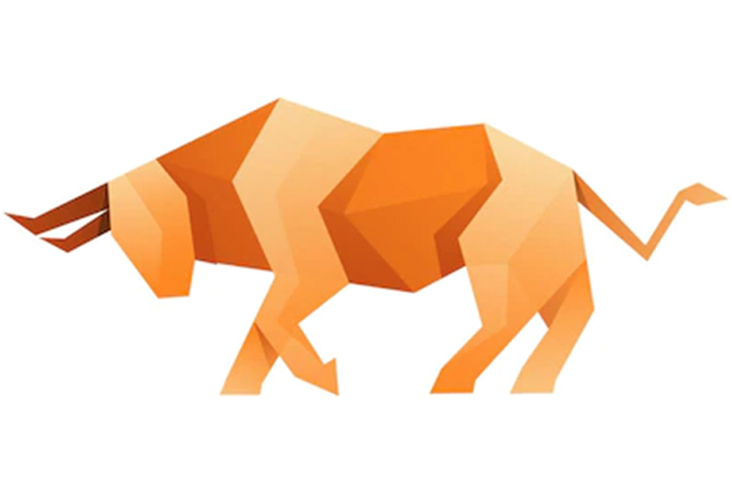In the pantheon of Greek mythology and the ancient Greek worldview, the Twelve Labors of Hercules, also known as Herakles, have a prominent position.
The Twelve Labors of Hercules, with its focus on lunacy, murder, and atonement, is illustrative of many ancient Greek views about human nature and explains the formation of the stars and the Milky Way.

Many locations in Greece, particularly on the Peloponnesian Peninsula, are linked to the Labor he performed. Many of these are still well-known to modern audiences because of their significance in Greek mythology.
This article will discuss the seventh labor – Capturing the Cretan Bull.
The Cretan Bull, as its name implies, originated on the island of Crete. However, this beast could be found across Ancient Greece and was seen by Heracles and Theseus. Keep reading to learn the Bull’s life and story.
Cretan Bull And King Minos
There is no legendary origin narrative for the Cretan Bull. The animal was first seen when it made its way out of the Mediterranean Sea and onto the Greek island of Crete.
It is said that Cretan prince Minos appealed to Poseidon for a sign that he was the true heir to King Asterion. Poseidon granted his petition by bringing forth a majestic white bull from out of his domain.
Upon witnessing the Bull, the Cretans took it to be a sign from the gods that Minos was worthy of the throne of Crete, and he duly was crowned king.
Cretan Bull And Pasiphae
King Minos was supposed to sacrifice the gorgeous white Bull to his patron Poseidon. Still, in a moment of weakness, he substituted a lesser bull.
Minos wanted the animal to join his herd since it impressed him. However, whether he thought Poseidon wouldn’t notice or care about the switch is unclear.
The god Poseidon, however, was aware of the switch and took offense to it. After the punishment, he made it such that Minos’ feelings for the Cretan Bull were transferred to his wife, Pasiphae.
As a result, the Cretan Bull became an object of Pasiphae’s sexual desire, and she fell in love with it physically.
Queen Pasiphae of Crete sought out Daedalus, the fabled artisan since she could not fulfill her desire to mate with the Cretan Bull. For Pasiphae to have a child with the Cretan Bull, Daedalus constructed a hollow cow inside of which she could hide.
After the Cretan Bull and Pasiphae mated, King Minos’s wife became pregnant with a monstrous offspring who would be known as Asterion but more often as the Minotaur.
Poseidon drove the Cretan Bull insane after Pasiphae had impregnated him. The Bull would wreak havoc on the Cretan countryside, mauling and murdering anybody who ventured too close.
Cretan Bull And The Seventh Labor Of Heracles
Heracles’ Seventh Labor required him to go to Crete, where he would be entrusted with capturing the Cretan Bull and returning it to Mycenae alive.
King Minos welcomed Heracles’ arrival on the island of Crete. He hoped the legendary hero would kill the destructive beast wreaking havoc on his country.
Heracles faced stronger foes than the Cretan Bull, such as the Nemean Lion and the Lernaean Hydra. Yet, the demi-god managed to subdue the Bull by wrestling and choking it.
Cretan Becomes The Marathonian Bull
Once King Eurystheus learned that Heracles had successfully returned the Cretan Bull, he intended to sacrifice it to the Greek goddess Hera, who had helped him so much. However, Hera did not want a sacrifice due to Hercules’s efforts. Therefore, the animal was either let go or managed to escape.
The Cretan Bull then made his way to Sparta via Arcadia, the Isthmus of Corinth, and Attica, where he eventually arrived at the site of the Marathon Fight. The Bull finally settled down at Marathon, which continued to bring destruction and injury to humans just as it did in Crete, earning it the new name “Marathonian Bull.”
Androgeus And The Marathonian Bull
Aegeus, son of Pandion, was the king of Athens at the time, and he, like King Minos of Crete, had to deal with the problem of the problematic beast. Unfortunately, no Athenians who fought back could escape the city alive.
Legend has it that after witnessing Androgeus’s skill at the Panathenaic Games, Aegeus ordered the son of King Minos to slay the Marathonian Bull. Aegeus hoped that the Cretan would be able to free his territory of the Bull.
Androgeus’ athletic prowess was not enough to save him from the Marathonian Bull, who fatally gored him. Androgeus’s death sparked a war between Crete and Athens, which resulted in Athens’ defeat and the payment of tribute by the island nation.
Theseus And The Marathonian Bull
Then, another athletic youth named Theseus, the long-lost son of Aegeus, showed up at Aegeus’ court. Aegeus did not recognize his son, but his new wife, Medea, did. She conspired to have Theseus killed because she was afraid that her son, Medus, would not be able to inherit the crown of Athens.
Medea told Aegeus that sending the stranger against the Marathonian Bull would lead to Theseus’ death. Therefore Aegeus sent the stranger.
However, Hecale encouraged Theseus to offer a sacrifice to Zeus before confronting the Bull, which the hero duly did. As a result, Theseus successfully subdued the Marathonian Bull via his skillful wrestling.
The hero, Theseus, drove the Bull back to the Acropolis, offering it as a sacrifice to the goddess Athena many years after the Bull’s original allotment had expired.
In this way, the Cretan Bull’s life ended in Athens.
Some say that the constellation Taurus has been named after the Cretan Bull or the Marathonian Bull. However, other bulls from Greek mythology have also been suggested as possible origins for Taurus.
Later, Theseus would journey to Crete, where he would slay the Minotaur in the Labyrinth under King Minos’ castle.
Summary
Historically, the Bull was a prominent emblem of fertility and greenery in Minoan Crete, and the locals worshiped such. In addition, cave dwellers utilized bulls in several prehistoric burial ceremonies.
Also, during this period, the Bull was revered in some areas of Spain and is also revered at the Neolithic shrines of 7000 B.C. Turkish civilization of Çatalhöyük.
Ancient Mediterranean nations regularly worshiped bulls. It was not until much later that the Cretan Bull and its offspring, the Minotaur, entered Greek mythology.
